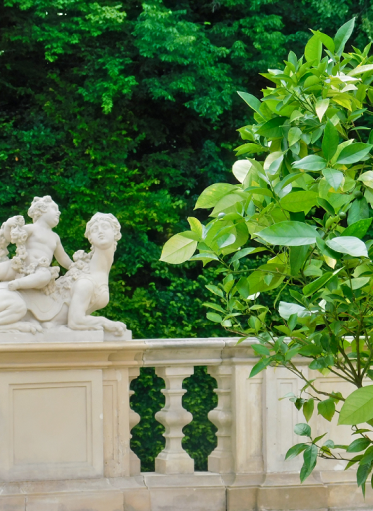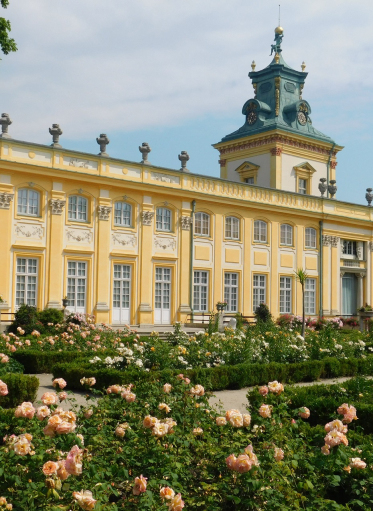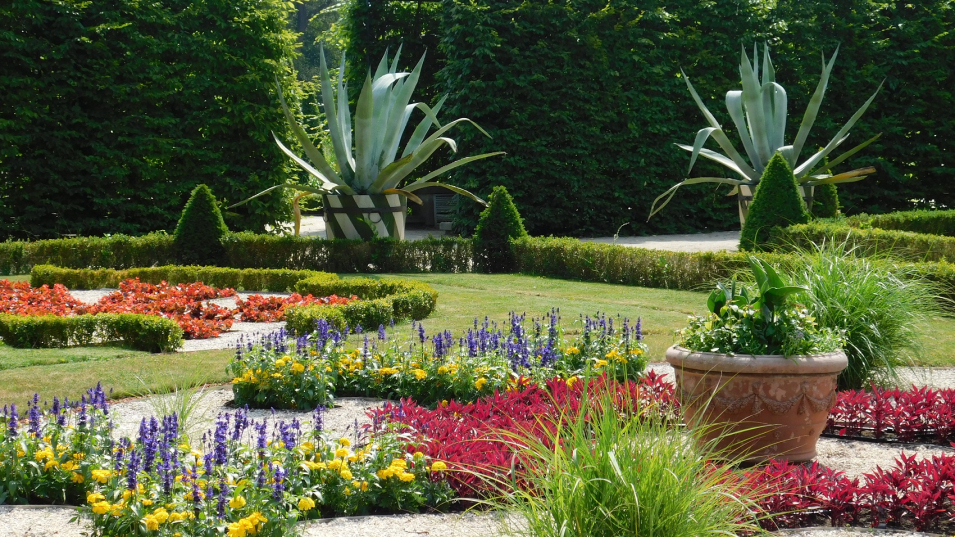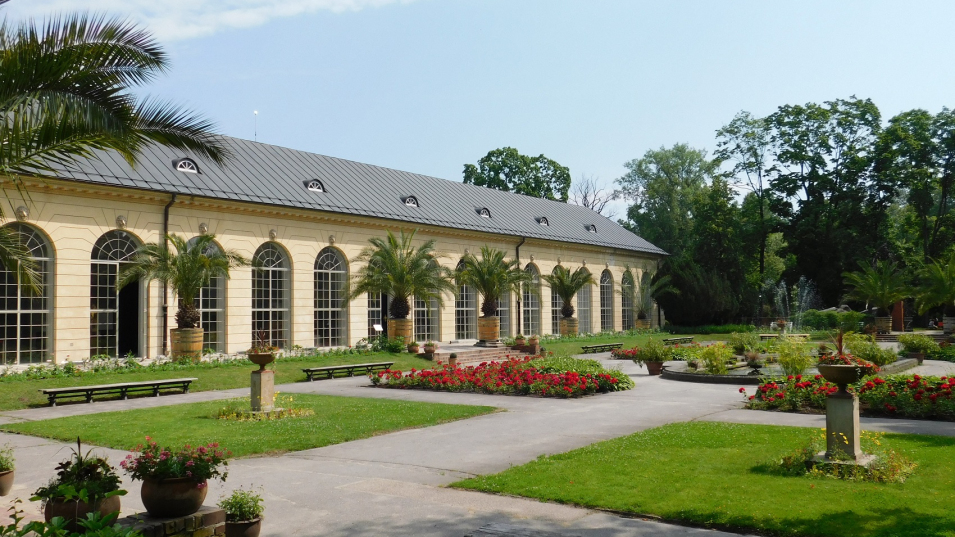Garden art
Garden art was one of the disciplines that reflected the wealth, abundance and broad influence of the Ottoman Empire. Poles visiting Constantinople and other royal cities were impressed by the gardens and exotic plants there. The Ottomans’ love of flowers was so widespread that they were called the nation of gardeners. Thanks to numerous political and trade contacts, many species of ornamental and Mediterranean plants were brought back to the Republic of Poland. Although the memory of their origin has passed, they are still some of the most frequently cultivated exotic plants.
History of plants of the Ottoman Empire
The show in the historic Wilanów gardens is intended to remind about the history of plants of the Ottoman Empire and their importance in the gardens of the former Polish-Lithuanian Commonwealth. Over 25,000 ornamental plants were planted in the flowerbeds! The composition and colours of their flowers in shades of yellow, red and blue are inspired by Ottoman works of art from the Wilanów collection and the collections of Turkish museums and libraries, including: the Topkapi Palace, Istanbul University Library, and the Istanbul Museum of Turkish and Islamic Art. In addition, 50 exotic plants were exhibited in the gardens around the Wilanów Palace, which are intended to evoke the atmosphere of the Orient.
The Rose Garden
In July, you can admire tall white lilies and colourful roses in the Rose Garden. Their extraordinary beauty and sensuality give them a very strong symbolism associated with passionate love in Turkish culture. In Turkish art, the use of a rose pattern for decorative purposes was very common. Their representation can be found in the Koran from 1645, which is in the Museum’s collection. The baroque garden is decorated with bitter oranges, lemons and common oleanders grown in characteristic pots painted with white and green stripes.
The North Garden
The floral arrangements of the North Garden with red dahlias and begonias and blue sage refer to traditional tiles and vessels from İznik, a municipality and district of Bursa Province in northwestern Turkey. They are widely considered one of the greatest achievements of Ottoman ceramic art. Artists painted geometric patterns, plant motifs, birds and other animals on them. One such work is a plate from the early 17th century from the Wilanów collection with a fanciful representation of a rose, a tulip and a saz leaf. Oriental glitz is added by yellow marigolds, reminiscent of intricate gilded decorations.
The Orangery
Colourful flower beds around the Orangery in the form of densely woven plantings of many different plant species create a structure of embroidery known from Ottoman fabrics, carpets and tents. In the Museum of King Jan III’s Palace at Wilanów there is an example of such an embroidered wall hanging and applied fabric. A Turkish tent, which disappeared at the end of 1944, was exhibited in the Wilanów Orangery.
17th International Congress of Turkish Art
The show “Oriental Summer: Plants of the Ottoman Empire in the Wilanów Gardens” was prepared on the occasion of the 17th International Congress of Turkish Art (ICTA), co-organised by the Museum of King Jan III’s Palace at Wilanów and the University of Warsaw. The congress was held on
18–21 September, 2023.
18–21 September, 2023.





